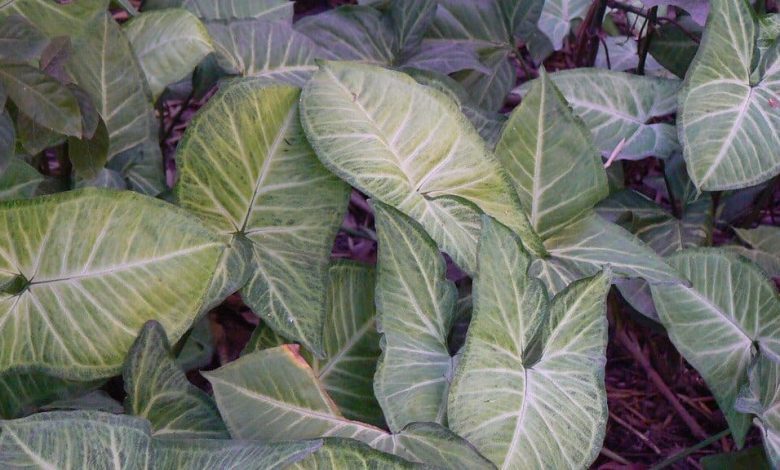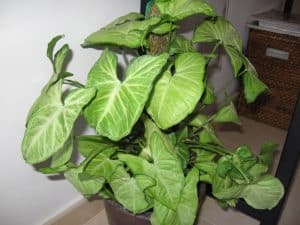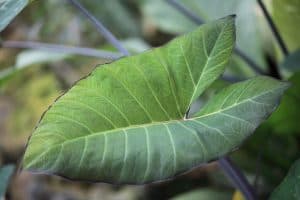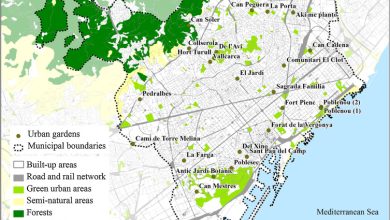El Singonio: [Characteristics, Planting, Care, Substrate and Irrigation]

 The Syngonium or arrowhead, a plant with the scientific name Syngonium, is recognized by the peculiarity of its large, arrow-shaped leaves and a dark green tone with whitish veins that give beautiful nuances to its pronounced nerves.
The Syngonium or arrowhead, a plant with the scientific name Syngonium, is recognized by the peculiarity of its large, arrow-shaped leaves and a dark green tone with whitish veins that give beautiful nuances to its pronounced nerves.
It is a plant that grows well indoors. In addition, it can also be considered as an ornamental plant. It is also considered an invasive plant in some parts of the world.
Characteristics of the syngonium
- Family: Araceae.
- Origin: Brazil, Bolivia, Ecuador and Mexico.
- Common Names: Arrowhead Vine or Plant, Tri-Leaf Wonder, Nephthytis, African Evergreen, Green Gold Nephthytis, Goosefoot Plant, Five Toes.
 It grows in the tropical jungle areas of Central and South America, where it develops a great ability to climb rocks and very diverse trees.
It grows in the tropical jungle areas of Central and South America, where it develops a great ability to climb rocks and very diverse trees.
More than twenty species are known, but the most popular are S. podophyllum and S. wendlandi. It belongs to the same family as the anthuriums.
It is a climbing plant (like ivy or silver pothos) with a great capacity to grow in a short time, reaching a maximum height of about two meters. At some point in its growth, it will require you to support it with a tutor to be able to stand upright.
Ideal for people who are not experts in the art of gardening, it comes from South America and belongs to the Araceae family.
Temperature: Where to plant the syngonium?
The temperature it supports varies from 16 to 21 ºC. It can even tolerate hotter climates, up to 30°C, given its tropical jungle origin.
But the ideal is to always keep it at a constant room temperature, without sudden changes that alter it to the point of losing its beautiful leaves. It adapts well to lower temperatures and outside its original nature, but do not subject it to sudden changes or bring it close to cold or hot air currents (heating systems with radiators)
Low humidity tolerates it and suits it better. But if the humidity is high and she is very well fed, with all her nutrients, she will bear without problems.
Light: What needs do you have?
 It requires indirect sun exposure, it should never be insolated for long periods, because its broad leaves will be noticeably affected.
It requires indirect sun exposure, it should never be insolated for long periods, because its broad leaves will be noticeably affected.
And although it is capable of withstanding a dimly lit environment, it should be clear to you that it will always need natural lighting. Place it near a window or on a terrace.
But keep in mind that in rather shady places, its foliage turns equally dark and its characteristic shades will no longer be seen. But it doesn’t die.
Substrate and Fertilizer: How do we prepare the land?
Surely you are wondering right now what is the most suitable substrate for this plant.
A formula containing 4 parts blonde peat moss for every part fine sand is more than enough. Also instead of sand, a portion of perlite or polyurethane can be added.
Regarding the fertilizer, we recommend a complete type with a 3:1:2 balance, at a rate of 150-200pmm. And if we opt for the slow-release fertilizer process, simply add a calcium compound that increases the pH level.
Irrigation: How and how often do we water?
 When supplying water, it is advisable to do it moderately without allowing the soil to dry out between each watering. Also do not execute this action in such a way that the base is flooded.
When supplying water, it is advisable to do it moderately without allowing the soil to dry out between each watering. Also do not execute this action in such a way that the base is flooded.
This is actually fatal for many species and this plant is no exception.
The secret of its resistance and durability is in preventing the roots and the base of the leaves from rotting with excess water.
It sprays all its leaves if the day is too hot, but in reality this plant does not demand much in terms of humidity.
A tutor with moss should also be placed when it begins to shed its leaves. In general, the dry ones fall off and new leaves appear on the upper part of the stem that must be molded, because the aerial roots that protrude will have to enter the moss. It is not difficult to get it.
Climbing stems also appear that you must cut so as not to steal much energy and keep it growing compactly.
Do not neglect it and you will have an excellent indoor plant, with great durability and beauty.
Syngonium pests and diseases
 Syngonium can be susceptible to pests because it grows so densely. They love to hide and be protected within their dense foliage.
Syngonium can be susceptible to pests because it grows so densely. They love to hide and be protected within their dense foliage.
Keep your eyes open for mealybugs, especially as they grow. These white, cotton-like pests like to hang out at nodes and under leaves.
We watch and try to expel them when they have appeared with a spray spray of neem oil or outside with the hose.
You also have to watch out for aphids and mites.
It is better to act as soon as you see a pest because they multiply very easily. Pests can travel from plant to plant quickly, so have them checked when you spot them.
Is syngonium a toxic plant?
Yes. Plants belonging to the syngonium species are toxic plants.
Most houseplants are toxic, so be careful if you have small children or dogs.

![Photo of Runner Thistle: [Cultivation, Irrigation, Care, Pests and Diseases]](https://www.complete-gardening.com/wp-content/uploads/2022/08/runner-thistle-cultivation-irrigation-care-pests-and-diseases-390x220.jpg)

![Photo of Prune Begonia: [Importance, Time, Tools, Considerations and Steps]](https://www.complete-gardening.com/wp-content/uploads/2021/06/Podar-Begonia-390x220.jpg)
![Photo of Pruning a Sick Orange Tree: [Importance, Season, Tools, Considerations and Steps]](https://www.complete-gardening.com/wp-content/uploads/2022/08/pruning-a-sick-orange-tree-importance-season-tools-considerations-and-steps-390x220.jpg)